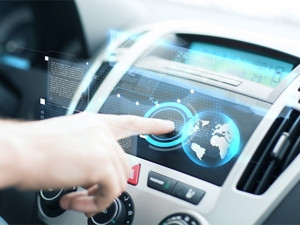
New in-vehicle infotainment services such as Apple CarPlay and Android Auto will generate large amounts of new cellular machine-to-machine (M2M) data traffic.
This is according to a recent Juniper Research: M2M: Strategies & Opportunities for MNOs, Service Providers & OEMs 2016-2021, which says over the next five years, in-vehicle infotainment services will account for up to 98% of all M2M data traffic.
Data intensive applications such as Internet radio, music streaming applications and information services will generate approximately 6 000 petabyte per annum by 2021, equivalent to over 300 billion hours of music streaming, says the report.
In-vehicle 4G SIMs will provide 'over-the-air' service and subscription updates for drivers and passengers, it adds.
The study reveals M2M technology will further the development of autonomous driving systems in the future. Cellular vehicle-to-vehicle (V2V) technology, enabled through M2M, is expected to be the cornerstone of the system over the coming years, it adds.
According to Research and Markets, over the years, automotive manufacturers and service providers have been developing connectivity solutions such as M2M connectivity platforms.
M2M connectivity enables the interconnectivity between two vehicles. Innumerable sensors and processors integrated into a car provide accurate and real-time information about the surrounding environment to the driver, it says.
This trend is expected to have a big impact is the deployment of vehicle-to-everything technology in vehicles, says Research and Markets. V2V technology has already gained importance in the automotive industry as it enables vehicles to send or receive any appropriate information during transit, it says.
As a result, the Juniper report stressed that operators will need to ensure that their networks remain able to cope with the projected increases in data traffic, especially in urban areas.
Future smart city systems, such as smart parking and smart intersections, will further drive data usage and the potential strain on networks, it notes.
"The wider M2M market offers a reprieve from declining traditional voice and messaging revenues. Operators are now champing at the bit to capitalise on the growth of M2M," says research author Sam Barker.
Analysys Mason predicts the number of connected cars in 2016 will accelerate to over 150 million, with telecoms operators reaping the benefits.
It says connected cars are the most attractive machine-to-machine (M2M) opportunity for telecoms. The research firm expects over 800 million connected vehicles by 2023.
However, Juniper warns for network operators to maximise their opportunity in the space, they will need to move away from merely providing connectivity and enablement, and additionally offer value-added services to their customers.
Share